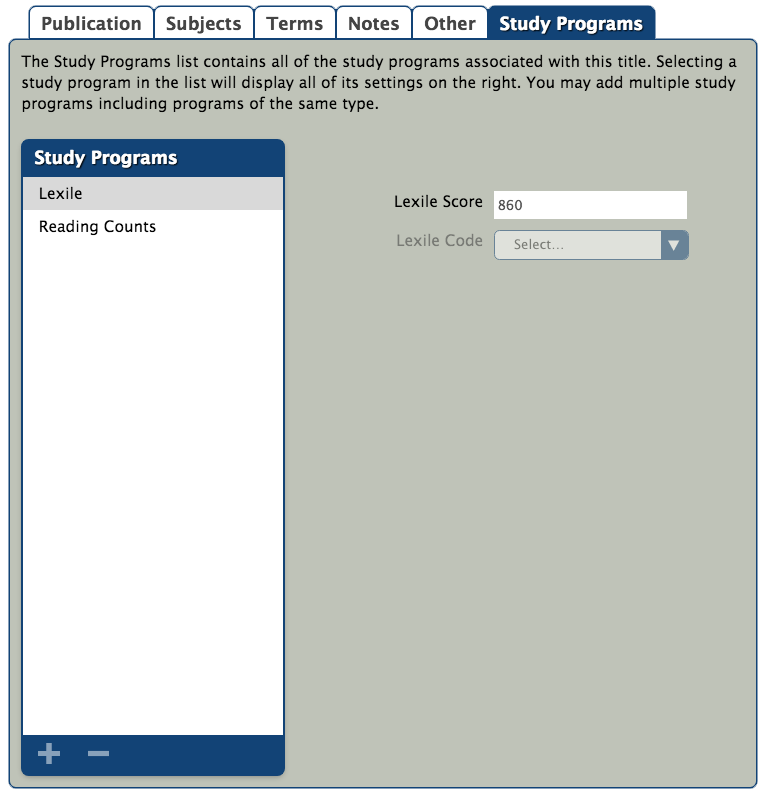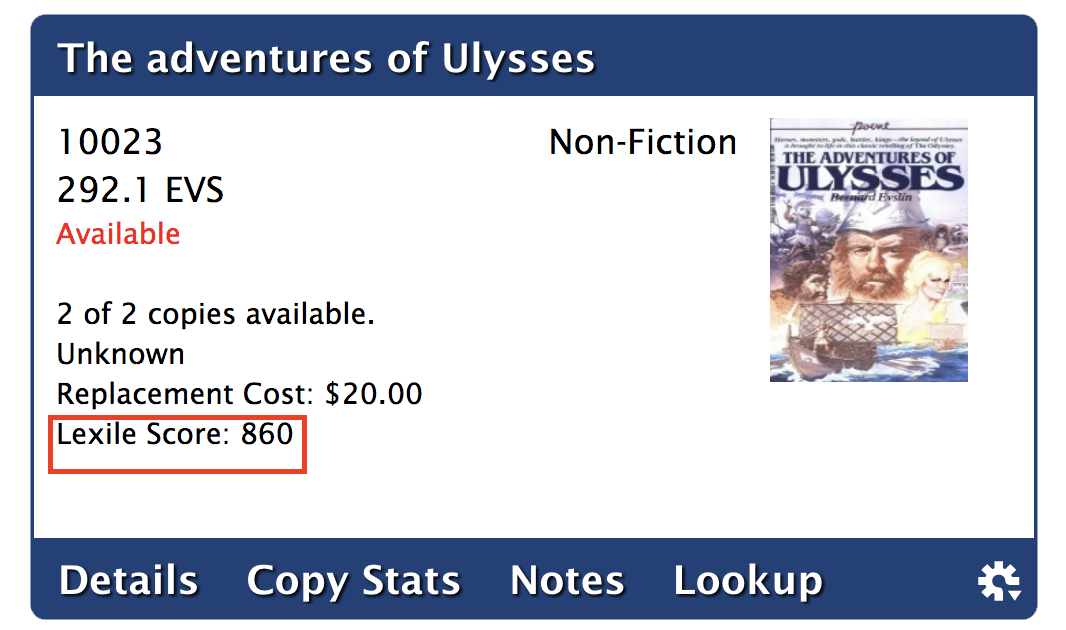Items
Related Blog Posts
Blog Posts
-
Items: a few things you may not know...
created by
Apr 12, 2023
-
Searching by Subject
created by
Nov 16, 2022
-
Assigning policies–the complete guide
created by
Mar 23, 2022
-
Title Assistant to the rescue!
created by
Jan 27, 2022
-
Overdue Items Notices? We've got you cover-ed
created by
Nov 24, 2021
-
Search smarter!—Combine search results
created by
Oct 13, 2021
-
Using Contents Notes
created by
Sep 23, 2021
-
Introducing... FAQs!
created by
Jul 07, 2021
-
Changing call numbers—helpful utilities
created by
Mar 03, 2021
-
From our librarians—Reusable book menu cards
created by
Nov 18, 2020
This page has been moved over to https://support.goalexandria.com/patrons/patron-lexiles/
What are Lexiles?
You can add Lexiles to patron and title records for free. However, the Expanded Lexile Services integration allows you to also add multiple Lexile scores for patrons over a period of time, create graphs, and use the Update Title Lexiles utility.
Contact our Sales Team if you're interested in adding it to your library!
Lexiles have become the most widely accepted reading measurement in use today; renowned as the most accurate way of matching readers to suitable text. Before high school graduation, more than 19 million students will receive a Lexile measurement.
Developed by MetaMetrics, Inc.®, a Lexile is a scientifically-based reading measurement that can be used to match a patron's reading ability to the overall difficulty of a specified text. This provides educators with a standardized system of measurement, allowing them to better monitor the reading progress of their students.
Educators and librarians are also able to better match readers to titles with similar Lexile measurements. In this way, students will be able to have more enjoyable reading experiences and are less likely to become frustrated by unfamiliar vocabulary or complex sentence structures.
Assign an Item Lexile
Items > Study Programs > Lexile
Alexandria allows you to import and export item Lexile measurements, regardless if Alexandria's Lexile module has been licensed. Furthermore, even if you're not licensed to use Alexandria's Lexile module, you can apply an item Lexile measurement (0 – 2000) via the Lexile field in the Study Programs tab.
If a Lexile measurement has been applied to an item, and you are licensed to use the Alexandria Lexile module, it will be displayed in the Current Item section of the Circulation window.
As shown in the example below, the item has its Lexile measurement (860) displayed in Current Item pane of the Circulation window.



